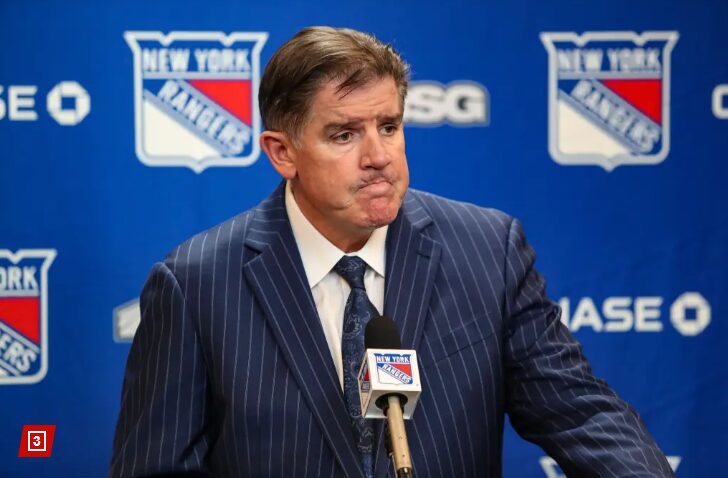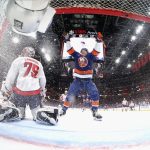Rangers Poised for Imminent Danger with Dreadful Power-Play Unit
Rangers Running Out of Solutions to Revive Struggling Power-Play Unit
The Rangers’ ongoing struggles with their power play seem to have no end in sight, with the team desperately trying to find answers. Despite dedicating the second half of Sunday’s practice to fixing their power-play woes — a dismal 2-for-43 over the last 16 games — head coach Peter Laviolette could only offer a resigned smile when asked about any positives from the session.

“There were a lot of good chances out there to score goals,” Laviolette said. “No goals.”
This comment echoed what transpired in the Rangers’ 3-0 loss to the Devils on Saturday, where the power play couldn’t convert on two opportunities and allowed a shorthanded goal. Similar issues plagued their previous games against the Wild and Sharks, and it’s been a recurring problem over the past month.
Laviolette acknowledged that the Rangers moved the puck well during Sunday’s practice, but as they approach Monday’s game and the final stretch of the regular season, the team faces a grim reality: The top power-play unit has stalled, and the second unit — featuring a mix of youth and experience — is still fighting for more ice time. Despite being the most “noticeable” group in Friday’s practice, they haven’t been able to spark the offense either.
This frustration has become a routine part of the Rangers’ season, as they search for solutions to their various problems, including a defense that gives up too many goals and an offense that isn’t producing enough. Their power play, once a strength, has now become a liability.
Sunday’s practice saw the top unit of Adam Fox, Artemi Panarin, Mika Zibanejad, J.T. Miller, and Vincent Trocheck getting the bulk of the reps, while the second unit — which included Chris Kreider, Alexis Lafrenière, Gabe Perreault (with Brennan Othmann rotating in), and Jonny Brodzinski — took the ice as well. The second unit has a balance of veteran presence, with Kreider’s net-front ability, and young talent like Othmann and Perreault, both of whom could provide the spark the unit desperately needs.
Brodzinski emphasized that the second unit’s focus is on getting more shots on net and recovering pucks. “We just have to keep firing pucks at the net,” he said. “That’s the only way we’ll get out of this slump.”
He’s also been working closely with Perreault, helping him adjust to the quicker pace of NHL penalty-killing units. The adjustment is key for Perreault, who spent the last part of the season in college before signing with the Rangers.
Othmann also believes he can contribute to the power play, though he’s taking a wait-and-see approach for the rest of the season. If he earns a spot, it wouldn’t surprise him, as he’s learned to expect the unexpected after time spent in both the AHL and NHL.
There’s no quick fix for the Rangers’ power-play struggles, especially as they remain outside the playoff picture — four points behind the Canadiens for the Eastern Conference’s second wild-card spot. With only six games left to make up ground, they’ve experimented with shuffling lines and even added Miller back to the top unit.
Despite these efforts, Laviolette has hinted that the second unit has impressed him the most, being the “more effective” and “more noticeable” group.
At this crucial point in the season, where every missed power-play opportunity becomes even more significant, Brodzinski believes the key to success is simplicity. “It’s not rocket science,” he said. “All the best power plays in the league just shoot pucks and recover pucks. You have one more guy than them, so it should be an advantage.”



No Comment! Be the first one.